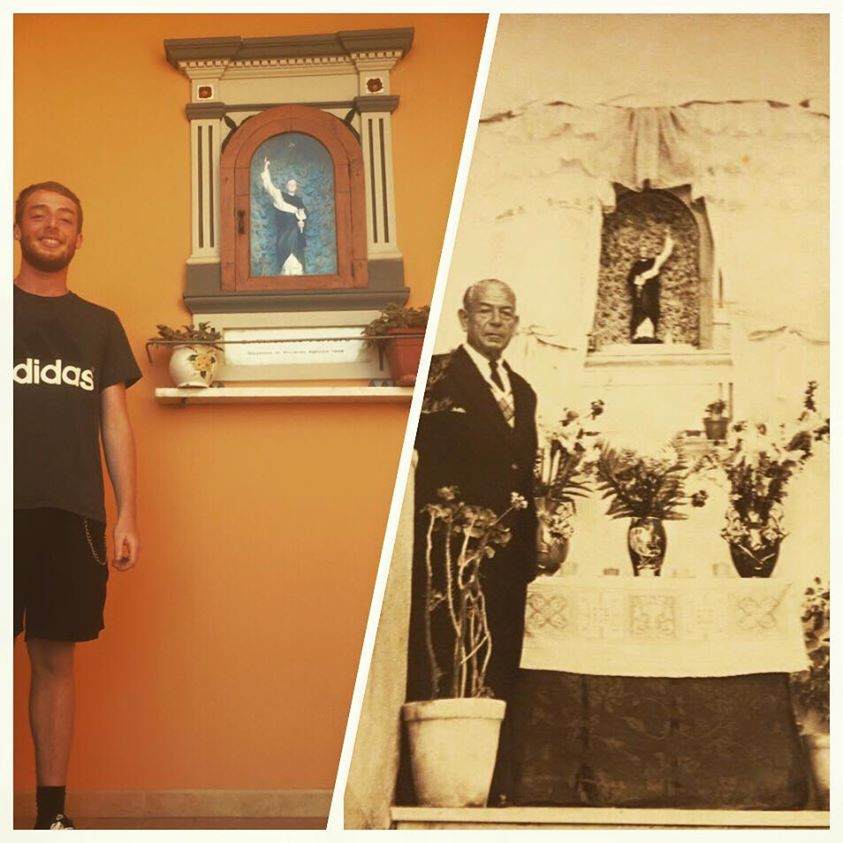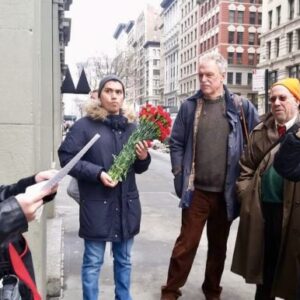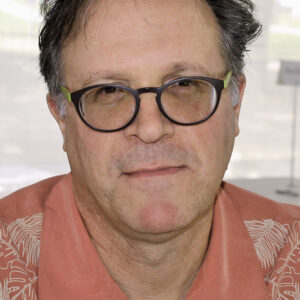In the heart of the Bronx – just a few miles from the Bronx Zoo and the New York Botanical Garden – lies Arthur Avenue. Also called the “Little Italy of the Bronx,” it is the gathering place for the 60,000 Italian-Americans who live in the borough.
The route starts with a playground named after Vincent Ciccarone, who was born in 1886 in the province of Chieti and died in the United States at the age of 34 as a result of wounds sustained in the Battle of the Argonne. From there, the street stretches for 300 meters, dotted with restaurants, bars and stores run by Italian-Americans.

The street where Italian-Americans can be found in the Bronx ends at another park, at the entrance of which appears a bust of Columbus. The statue was sculpted by the Piccirilli brothers, stonemasons who left Massa Carrara in 1888 and found success in America. And they created works that can still be admired today, such as the lions of the New York Public Library and the statue of Abrahm Lincoln in Washington D.C.
In September 2020, some protesters gathered around the Columbus statue on Arthur Avenue. On one side were those calling for its removal. On the other were those protesting in favor of keeping it. Between the two, the police were trying to keep things calm.
The petition
Protesters had gathered after a petition was launched to remove the statue. “For me Columbus represents the suffering and pain of Native Americans and African slaves,” Felix Cepeda, petitioner, tells us, “When I see a statue of Columbus I think of my African and Native American ancestors and all the suffering they had to endure because of Columbus. For many indigenous and African Americans Columbus just represents oppression. It’s like Jews not wanting to see a statue of Hitler. Unfortunately, indigenous and black communities, don’t get the same kind of respect.”

Cepeda – a 40-year-old activist who was born in New York to a family from the Dominican Republic – says that since the protests, he doesn’t feel like going anywhere near the statue again. “The last time I was in the park, I was threatened in person and then online.”
In the petition, Cepeda calls for the removal of all statues of Columbus in the city. And, in their place, he proposes honoring other Italians, like Mother Cabrini, the missionary nun who helped Italians who emigrated to America in the late 1800s. Or Vito Marcantonio, the Italian-American politician who was elected to the House of Representatives in 1945. He fought for civil and workers’ rights and for the independence of Puerto Rico.
Comments from subscribers to the petition – which garnered 114 signatures – read, “It’s time to stop honoring those who enslaved/murdered indigenous people and Africans for profit, stole their lands and assets, and built empires over their bodies. They are not heroic; they were genocidal criminals whose legacy still underlies our society. STOP!” And again, “Columbus didn’t discover anything. He is a rapist and a murderer. With a bad sense of direction.”
In New York City, there is a total of eight Columbus statues. Five in Manhattan, one in the Bronx, one in Queens and one in Brooklyn. Initiatives to remove them followed in the wake of the Black Lives Matter movement, which sees statues celebrating the Confederacy and Columbus as symbols of white supremacy.
In January 2018, the New York City administration decided to “keep the Columbus statues in place” and to “commission new monuments for groups of people who have been marginalized, removed, or erased from public histories and public spaces.”
But in 2020, after the murder of George Floyd, protests were renewed and at least 33 statues dedicated to the navigator were torn down. Also in New York, dissent against Columbus has grown. Not only among the descendants of Native Americans, but also among Italian-Americans themselves, especially younger ones.
At School
“The question that needs to be asked is ‘Does Columbus deserve to be in this place because of the values we believe in in modern society?’, says Michael Louis Agovino, a history teacher at a high school in Queens. “Removing the statues doesn’t make any sense unless you change your heart and mind. If you don’t teach how to have critical thinking, removing the statues won’t be the ultimate solution and may only create more unrest”.
When Michael talks about the topic in his family, the discussion brings out a real generational conflict. “When I criticize Columbus Day, I am seen almost as a traitor to my Italian identity. Most of my relatives have received an American upbringing and have a hard time questioning their beliefs by stepping out of their comfort zone. In part there is also a fear of delving into one’s past, because it may not be as glorious or as folkloric as it is portrayed.”

Agovino proposes other Italians that, in his opinion, would make more sense to celebrate. For example, magistrates Falcone and Borsellino, or the anarchists Sacco and Vanzetti who were executed in 1927 for a crime they did not commit. Or, citing police corruption issues, Frank Serpico. “He was in the NYPD, Italian-American, originally from Brooklyn. He was an undercover detective who exposed police corruption. His complaints were covered up and so he turned to the New York Times. For this he was then hit in the face by a gunshot, but survived.”
The school world is also caught up in the Columbus controversy. In May 2021, the New York City Department of Education had announced its decision to replace the Columbus Day holiday (celebrated every second Monday in October) with “Italian Heritage Day/Indigenous Peoples Day,” without providing guidance to teachers on how to explain the change. “You’re left to your own devices. That’s the beauty and the ugliness of being a teacher” and Michael explains that there are teachers who feel the same way he does, but also teachers who are “pretty conservative, who talk about it as a good thing, as much as Columbus was a wonderful person.”
Agovino explains to his students that history is made up of many voices. “History is subjective, it changes based on the perspective from which you look at it. Take July 4, 1776, for example. We all know that date. For a white man it may have been a day of triumph and glory. But for black slaves in Mississippi that date takes on a very different perspective.”
According to Michael, one of the reasons many Italian-Americans defend Columbus may be related to the level of wealth they acquired over time. “When things start going well financially, some [immigrants] – not all – tend to lose a part of their identity, where they came from, who they are as a people. It becomes convenient to say Columbus represents them. But at the time of Columbus, Italy didn’t even exist! The real question we need to ask ourselves is: Why is Columbus so important that we are willing to fight, scream, shout, and continue to defend him?'”

The Myth
According to Stephen J. Cerulli – an Italian-American and professor of history at Hostos Community College – the birth of the Columbus myth dates back to the foundations of the New World.”

After Independence there was an identity crisis in America, ‘Who are we? We don’t want to be British, do we?’ Many responded by seeking symbols for the post-European New World. Americans sought to create a myth to separate themselves from England, but still remain part of a European tradition.” And they found it in Columbus.
The association of Columbus to Italian (and Italian-American) culture happened only later. First, at the time of the lynching of eleven Italians in New Orleans in 1891.
“Below Rome, there is no statue of Columbus,” Stephen adds. “Even so, 86 percent of the Italian diaspora in America is from Southern Italy, and they were primarily the ones who celebrated Columbus.”
Then with the beginning of the 1930s, Fascism encouraged supporting Columbus celebrations in America. In 1933, Mussolini even gave the city of Chicago a statue of Columbus (which was removed in June 2020). “In 1932, in New York City” Stephen recounts, “in front of the Columbus statue, there was also a clash between anti-fascist ‘subversives’ and fascist supporters. The subversives argued that Columbus was a fascist symbol, and they wanted nothing to do with him.”
According to Stephen, today, the discussion revolving around Columbus celebrations is all in the hands of the Italian-American community. “In 2020, the symbol of Columbus, as an American symbol, has become solely an Italian issue. Because it is only more Italian organizations and fraternities that are fighting and opposing the removal of the statues.”


The narrative
Even if the statues are removed and the celebrations are cancelled, the story of Columbus will be told for generations. “Columbus’ real-life adventure was itself literary,” says Ilan Stavanas, Mexican-American essayist and author of ‘Imagining Columbus: The Literary Journey.” “His effort to emerge from obscurity into glory, his journey of discovery as a rite of passage, his death in solitude. His life seems like the creation of a talented Supreme Author.”
According to Stavanas, Columbus is reminiscent of three characters in literature: Don Quixote de La Mancha (for his obsession with reading), Robinson Crusoe (for his story of survival exploration), and Lemuel Gulliver (for his encounters with foreign populations and difficulties in understanding and interpreting languages). He evokes and precedes them all as a source of literary inspiration.

Certainly his life and the consequences of his discoveries pose a question for the foreseeable future. “Today,” Ilan reflects in his book, “rich international corporations hope to make outer space a fertile battlefield for technological power struggles, a stage for conquests and renewed domination of the haves over the have-nots. Will man repeat the mistakes of 1492 when expanding into galaxy? No doubt.”











